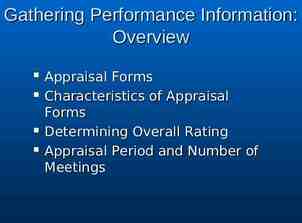101 Articulat ion MJC STUDENTS ARE GOING PLACES Letitia Senechal
32 Slides6.67 MB

101 Articulat ion MJC STUDENTS ARE GOING PLACES Letitia Senechal Miller, MJC Articulation Officer FALL 2017

ABOUT THIS TRAINING 1 st in a series of trainings designed to inform, empower, and more authentically engage college personnel in the critical function of curricular articulation at MJC, in the district, and the State of California

ARTIC 101 OUTCOMES After participating in this training, participants are able to: Outline the primary mission of the California Community Colleges (CCCs) Describe the relationship of CCCs to other systems and institutions of higher education in California Distinguish between transferable credit and articulated credit at the point of transfer

WHO SHOULD PARTICIPATE Faculty who aren’t quite “crystal clear” the many functions and facets of articulation new to teaching, to MJC, or to higher education in the state of California in leadership roles on campus and in the state embarking a comprehensive curricular update Administrators Student Services and Instructional staff

(in your own words) what is articulation?

WHAT WE DO THE MISSION OF THE CALIFORNIA COMMUNITY COLLEGES

We find it in the ED CODE

California Community Colleges California State University University of California Independent institutions

HIGHER EDUCATION IN CALIFORNIA WHERE WE FIT Independent Colleges & Universities

ESSENTIAL CONCEPTS Baccalaureate degree: A 4-year degree experience of freshman, sophomore, junior, or seniorlevel coursework and general education “breadth” experience Associate degree: A 2-year degree experience inclusive of freshman and sophomore-level coursework and general education “breadth” Lower-division: Freshman and sophomore level curriculum Upper-division: Junior and senior level curriculum Transfer: The mechanism and process through which a student completes courses at one institution and later uses them to satisfy requirements another institution

OUR CCC SEGMENT ARTICLE 2. Comprehensive Mission Statement [66010.1 - 66010.7] 66010.4. The missions and functions of California’s public and independent segments, and their respective institutions of higher education shall be differentiated as follows: (a) (1) The California Community Colleges shall, as a primary mission, offer academic and vocational instruction at the lower-division level for both younger and older students, including those persons returning to school. Public community colleges shall offer instruction through but not beyond the second year of college. These institutions may grant the associate in arts and the associate in science degree.

IN A NUTSHELL? MJC’s primary mission in California: To offer academic and vocational curriculum at the lower-division level To offer curriculum through but not beyond the 2nd year of college. grant AA/AS degrees

THE IMPLIED CURRICULAR MISSION To prepare students to transfer to another segment by: Designing lower-division courses to be used in lieu of courses to satisfy requirements of the other segments Academically preparing students for upper-division coursework required by the other segments Offering a pattern of lower-division courses that results in a broad learning experience and satisfies degree requirements within all systems

Ok, then. But how?

Articulat ion (PRETENTIOUS WORD) CRITICAL FUNCTION

Articulatio n The process and product through which courses and programs are formally recognized as comparable to educational experiences offered within another institution or system

what does this mean?

Back to the ED CODE

Course Numbering System Courses numbered 100-299 at Baccalaureate & Transfer* Level Because CCC baccalaureate level courses are not formally recognized as transferable, we do not classify them as such at this time.

TIME FOR SOME TRANSFER MATH Typical lower-division units for associate degree Total upper-division units Total units allowed for baccalaureate degree* *A handful of majors allow for exceptions.

ASSOCIATE DEGREE INGREDIENTS Transferable, lower-division baccalaureate units COURSES NUMBERED 100-299 TRANSFERABLE, LOWERDIVISON ASSOCIATE & BACCALAUREATELEVEL COURSEWORK Electives Associate Degree Major Requirements ? units 18-34* units General Education Breadth 37-39 units COURSES NUMBERED 1-99 PREPARATION FOR BACCALAUREATE CURRICULUM Competencies, Basic Skills, Prereq sequences ? units

WHAT THIS MEANS: At a minimum, the course transfers to the system(s) indicated as elective credit for the baccalaureate degree.

AT THE MOST The CSU and UC systems allow CCC students to apply a maximum of 70 units of lower-division coursework to the baccalaureate degree Transferable baccalaureate units Electives Associate Degree Major Requirements ? units 18-34* units General Education Breadth 37-39 units

WHAT THAT MEANS After GE and major requirements are satisfied for the associate degree, MJC students often have only a handful – if any – units available for courses that REQUIRED UNITS FOR TRANSFER unless those courses have HMMMMM .

Articulati on Adds value to baccalaureate CCC courses at the point of transfer by codifying that a CCC course may be used in lieu of a comparable course at the transfer institution to satisfy a lower-division baccalaureate requirement in the major prepare for upper-division coursework

An Articulation Officer’s Credo Does a given course evidence potential for any type of articulation? Beyond 60 units for degree, are students helped by courses that merely transfer as elective credits? If so, how? Can we measure it? Where are our articulation gaps? Do we know? Does our curriculum seamlessly fold into four-year programs? How do we fairly, accurately, and consistently distinguish baccalaureate preparation from baccalaureate rigor in our curriculum? How do we maintain and leverage a robust, current knowledge of baccalaureate trends to most meaningfully support students at the point of transfer? What tools do we have.

COMING UP IN THE SERIES

EXPLORING ARTICULATION RESPONSIBILITIES & MECHANISMS CSU EO 167: CCC right to self-determine baccalaureate level courses Course-to-Course articulation agreements between institutions CSU-GE pattern placement approval Approval for UC Transfer Course Agreements (TCA) allowing for MJC courses to transfer as elective credit UC Transfer pathway articulation IGETC Pattern placement Transfer Admission Agreements (TAGs) C-ID Descriptor approval Transfer Model Curricula that are the template different ADTs Intra-district Equivalency between MJC and Columbia College










